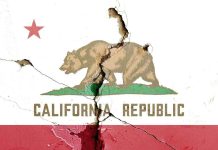
The American high-end art market, while dazzling and prestigious, faces the shadowy threat of becoming a playground for money laundering activities worldwide.
Key Takeaways
- The global art market lacks FATF international standards under the DNFBPs framework, creating loopholes.
- The art sector remains underregulated compared to banking, posing risks of misuse for money laundering.
- Methods like anonymous transactions and freeports enable the laundering of billions annually.
- Proposed measures in the U.S. and EU for AML obligations could significantly reduce illicit activities.
Lack of Regulation in the Art Market
The global art market operates with less stringent anti-financial crime regulations than sectors like banking and real estate. This leniency results in a fertile ground for money laundering and other financial crimes. The Financial Action Task Force (FATF), despite its efforts in other fields, has not yet established comprehensive standards for the art market under its non-financial businesses and professions framework. The absence of these standards causes a lack of rigorous “Know Your Customer” protocols, transparency in ownership, and due diligence within the art sphere.
These gaps make the international art market particularly vulnerable to transnational financial crimes, allowing billions in art transactions to evade scrutiny. Estimates suggest that $3 billion annually might be linked to suspicious activities through anonymous transactions, use of shell companies, and exploitation of freeports. The Beaufort case is one such example, illustrating how regulatory loopholes can be manipulated within the art sector for illicit financial gain.
Efforts Toward Global Standards
Both the European Union and the U.S. recognize these vulnerabilities and are progressing toward including art market participants in anti-money laundering obligations. However, without a unified international framework, discrepancies remain, and bad actors exploit these divides to their advantage. For a truly effective deterrence, a global standard integrating the art market into the FATF’s DNFBPs framework is essential. Such a standard would necessitate customer due diligence, comprehensive record-keeping, and mandatory reporting of suspicious activities.
Numerous governmental agencies and international bodies are seeking to craft policies ensuring art transactions can no longer be utilized as conduits for criminal funding. Experts advocate for a single, robust system capable of guiding international lawmakers when designing regulations targeting art-related money laundering. They propose measures including comprehensive data systems and collaborative efforts between countries to seamlessly enforce these new protocols.
Conclusion
The art market’s allure lies in its beauty and cultural significance; however, it cannot be allowed to continue as a low-risk channel for money laundering and terrorism financing. Addressing this issue demands concerted global action, backed by stringent standards and transparency measures. A new FATF global standard could ensure that the art market not only thrives in its aesthetic beauty but also maintains its integrity and security against illicit financial use, safeguarding against threats to international peace and stability.
As reforms take shape, the art market could transition from a realm of silenced complexities to a beacon of transparency and security, reinforcing both public confidence and the art world’s prestigious standing in culture and commerce.





